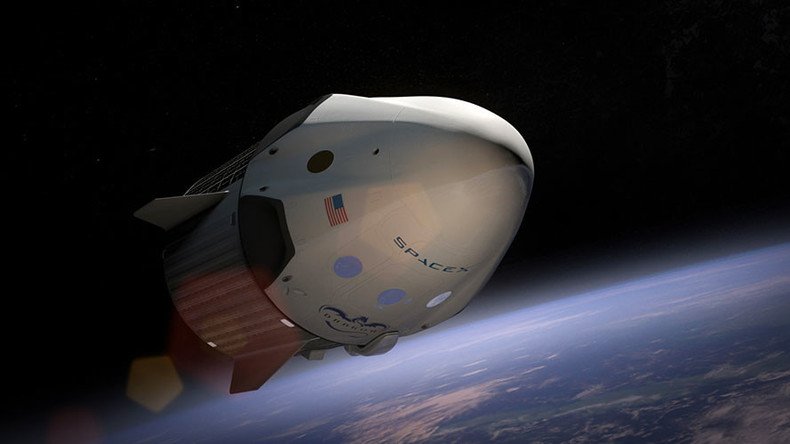The flight of Red Dragon: SpaceX to send capsule to Mars as early as 2018

SpaceX is planning to send one of its Dragon space capsules to Mars as early as 2018 – a full four years earlier than it previously planned.
According to the company’s announcement on Wednesday, the mission will involve an unmanned spacecraft dubbed the Red Dragon, which reports suggest will be a variant on the second version of its Dragon capsule, currently being used to take cargo to the International Space Station.
In a tweet announcing the 2018 target date, SpaceX suggested that more than one Red Dragon spacecraft would be sent to Mars, with the goal being to inform the overall architecture of the mission. Ultimately, that is to send humans to the Red Planet.
Planning to send Dragon to Mars as soon as 2018. Red Dragons will inform overall Mars architecture, details to come pic.twitter.com/u4nbVUNCpA
— SpaceX (@SpaceX) April 27, 2016
In separate tweets, SpaceX CEO Elon Musk said the Dragon 2 is being designed to land anywhere in the solar system, with the Red Dragon launch set to be the first test flight for the technology.
But wouldn't recommend transporting astronauts beyond Earth-moon region. Wouldn't be fun for longer journeys. Internal volume ~size of SUV.
— Elon Musk (@elonmusk) April 27, 2016
While this first set of missions won’t involve astronauts, they are meant to help SpaceX determine whether it can successfully land something as heavy as a crewed capsule on the Martian surface. The less-pressurized atmosphere on Mars means there isn’t much support in terms of slowing down a spacecraft before it lands, and that means the chances of a crash landing are much greater than compared to Earth.
So far, NASA has safely landed rovers on the Red Planet, but those weigh about 2,000 pounds. A Dragon capsule will likely weigh more than 13,000 pounds.
In an attempt to work around this problem, SpaceX has developed technology called “propulsive landing.” This incorporates eight rocket engines called SuperDracos, which would activate as a spacecraft descends onto Mars’ surface, slowing it down just enough to land safely.
The Red Dragon is expected to launch via the company’s Falcon Heavy rocket – which itself is still in the works – but SpaceX says that it was always built with the idea that it would carry astronauts. The capsule is being designed to be fully autonomous, with an advanced life support system and an emergency escape system that can move astronauts to safety should something go wrong.
Originally, SpaceX planned to launch its first flight to Mars in 2022, but that was apparently not fast enough for Musk and Co – even though NASA has said its own efforts to get humans to Mars won’t bear fruit until the 2030s. In 2011, Musk said he wanted to send humans to the Red Planet within 10-20 years, and this January he said he would unveil his plan in more detail at the International Astronautical Conference in Mexico this August.
It’s unclear whether the Red Dragon flight will move up Musk’s timetable for manned flights, but previously he said that human missions could start in 2025.












